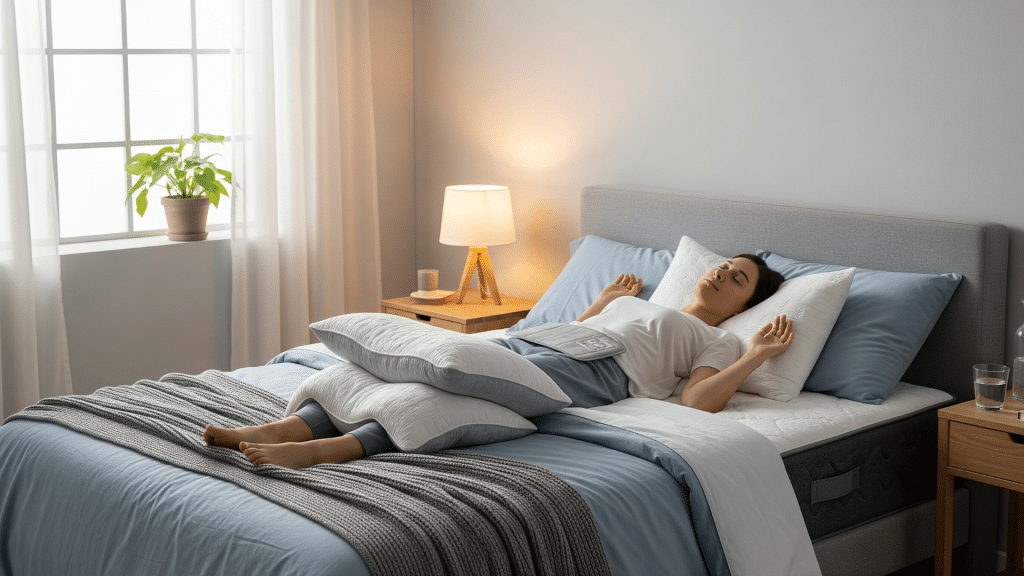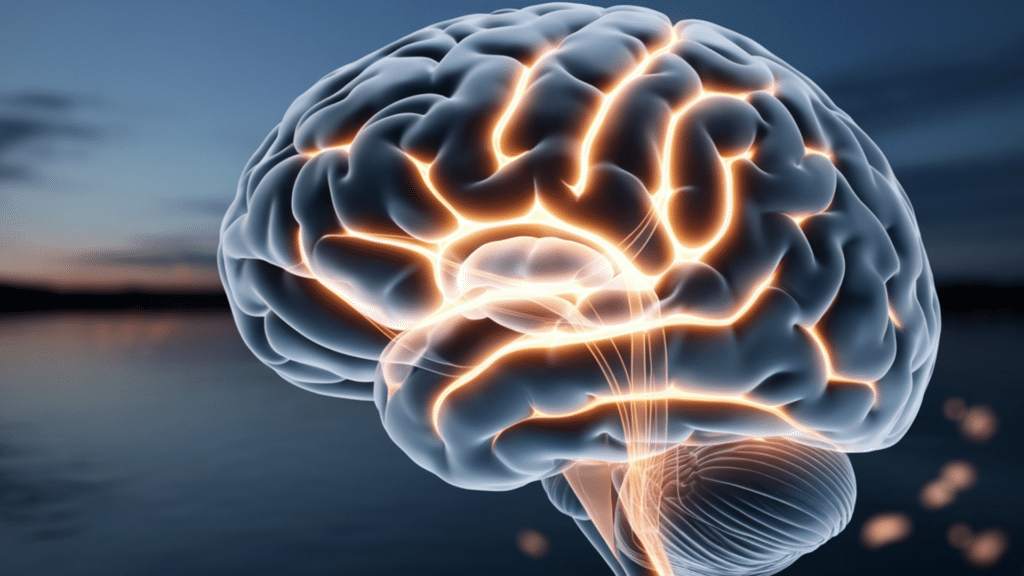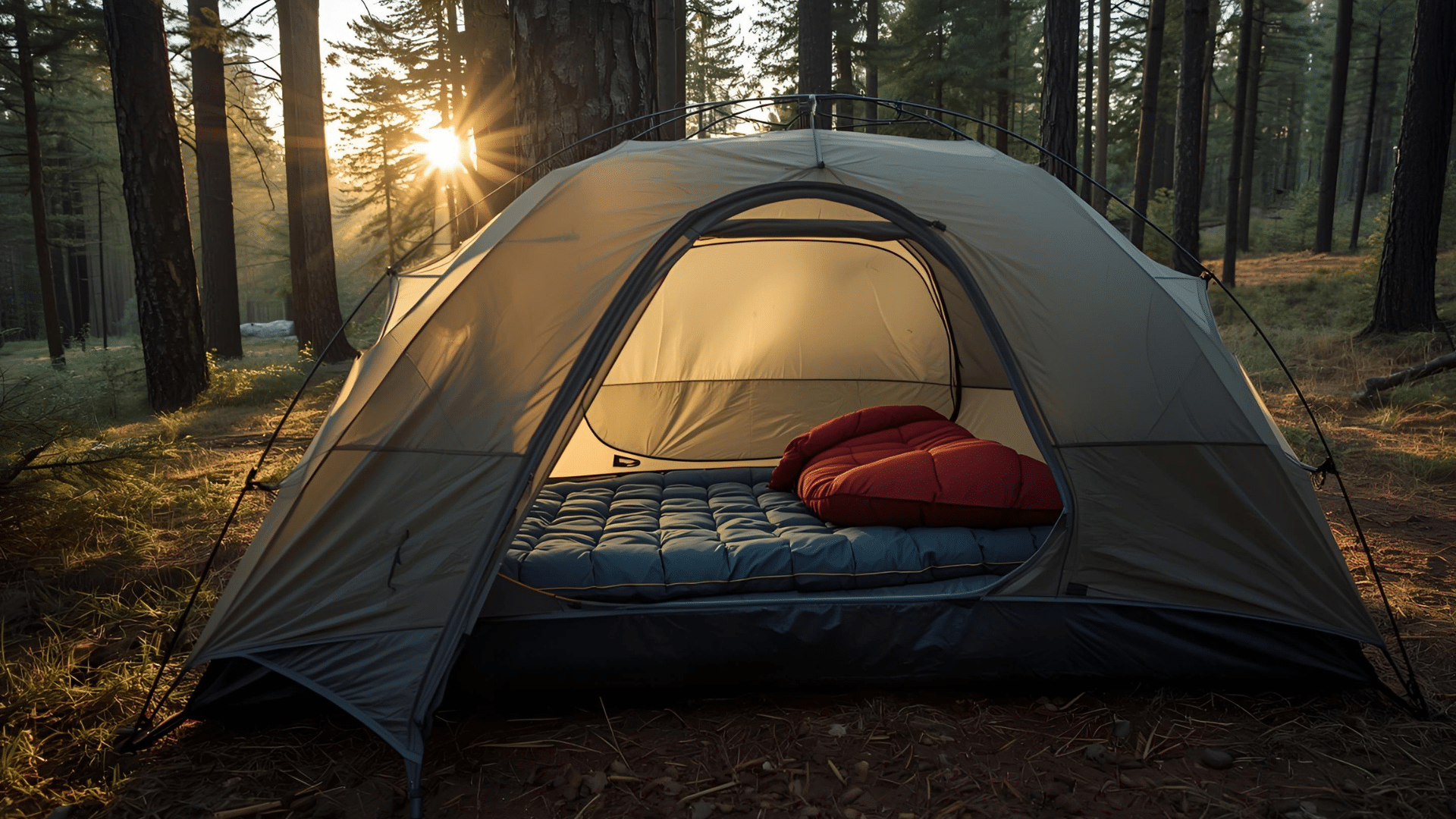Waking up with sore hips or finding it hard to fall asleep because of pain? I’ve been through that, and I know how frustrating it feels. Hip pain at night can make it tough to relax and stay asleep.
If you’re wondering how to sleep with hip pain, I’m here to help. I’ll walk you through common causes, the best sleeping positions, and how to use supportive pillows to ease discomfort.
You’ll also find tips tailored to your sleep style and habits that promote long-term relief. Let’s help you stop tossing and turning and wake up feeling better.
What Causes Hip Pain While Sleeping?
Various conditions can cause or worsen hip pain during sleep. Understanding these conditions is essential to finding effective relief methods. Here’s how common conditions contribute to hip pain at night:
1. Arthritis
Arthritis causes inflammation and joint wear, which can worsen at night due to reduced movement. As the body rests, stiffness and pain increase, making it difficult to find a comfortable sleeping position.
Relief Method:
- Use a medium-firm mattress to evenly support your hips and spine.
- Sleep on your back to evenly distribute body weight and reduce pressure on the hips.
- Apply heat therapy before bed to relax muscles and ease stiffness.
2. Hip Injuries
Previous hip injuries, such as fractures or strains, can lead to long-lasting pain. Sleeping positions that place pressure on the hip can aggravate the discomfort, making it more pronounced during the night.
Relief Method:
- Use pillows for support to keep the hip aligned and reduce pressure.
- Consider sleeping on the opposite side of the painful hip to avoid direct pressure on it.
3. Bursitis
Bursitis occurs when the fluid-filled sacs in the hip become inflamed, typically due to repetitive movement or pressure. Lying down increases pressure on these sacs, causing pain, particularly when side sleeping.
Relief Method:
- Avoid pressure on the affected area by sleeping on the unaffected side or on your back.
- Place a pillow between your knees while side sleeping to align your hips and reduce strain.
4. Hip Labral Tears
A hip labral tear disrupts joint stability and causes sharp pain. The lack of movement at night increases stiffness, and certain positions can further exacerbate this pain.
Relief Method:
- Consider using a full-body pillow to maintain spinal and hip alignment while side sleeping.
- Avoid twisting or bending the hip joint to prevent aggravating the tear.
5. Sciatica
Sciatica occurs when pressure on the sciatic nerve radiates pain to the hips. Lying down can aggravate this condition, causing sharp, burning sensations and making sleep difficult.
Relief Method:
- Elevate your legs with a pillow to relieve nerve pressure and improve sleep comfort.
- Sleep on your back with a pillow under your knees to reduce strain on the lower back and hips.
6. Hip Impingement
Hip impingement occurs when the bones in the hip joint don’t fit together properly. This can lead to friction and pain, especially when certain positions place pressure on the hip during sleep.
Relief Method:
- Sleep on your back with a pillow under your knees to relieve pressure on the hip joint.
- Use pillows to reduce strain on the hip joint, particularly if sleeping on your side.
How to Sleep with Hip Pain: Best Sleeping Positions
To relieve hip pain while sleeping, it’s essential to choose the correct positions and use pillows for support. If you’ve been wondering how to relieve hip pain while sleeping, here are the most effective strategies:
1. Sleeping on Your Back
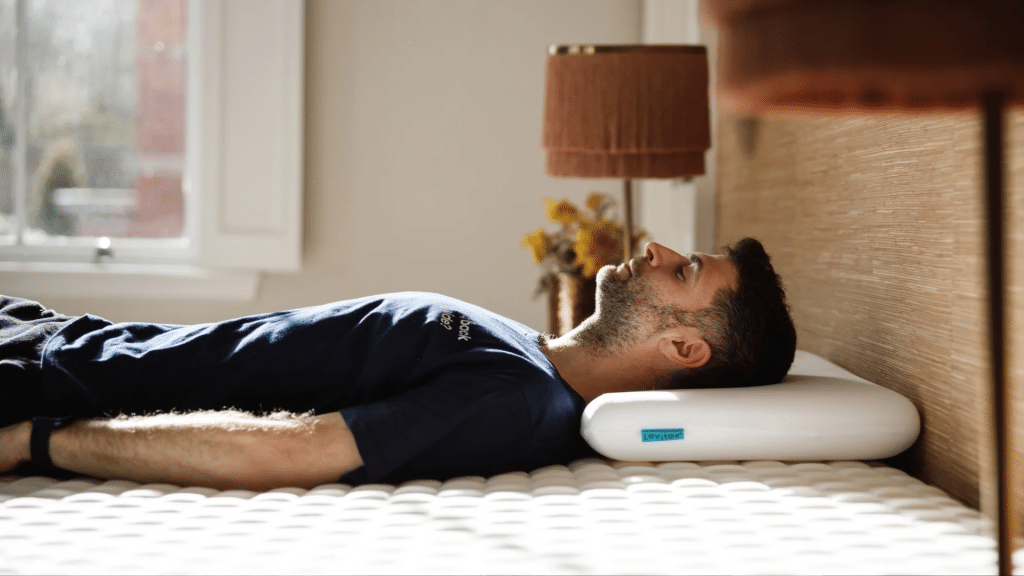
Sleeping on your back is one of the best positions for hip pain relief. It evenly distributes your body weight and minimizes pressure on your hips.
To further reduce discomfort, place a pillow under your knees. This helps maintain the natural curve of your spine, reduces strain on your hips, and alleviates discomfort, promoting a more restful sleep.
2. Side Sleeping
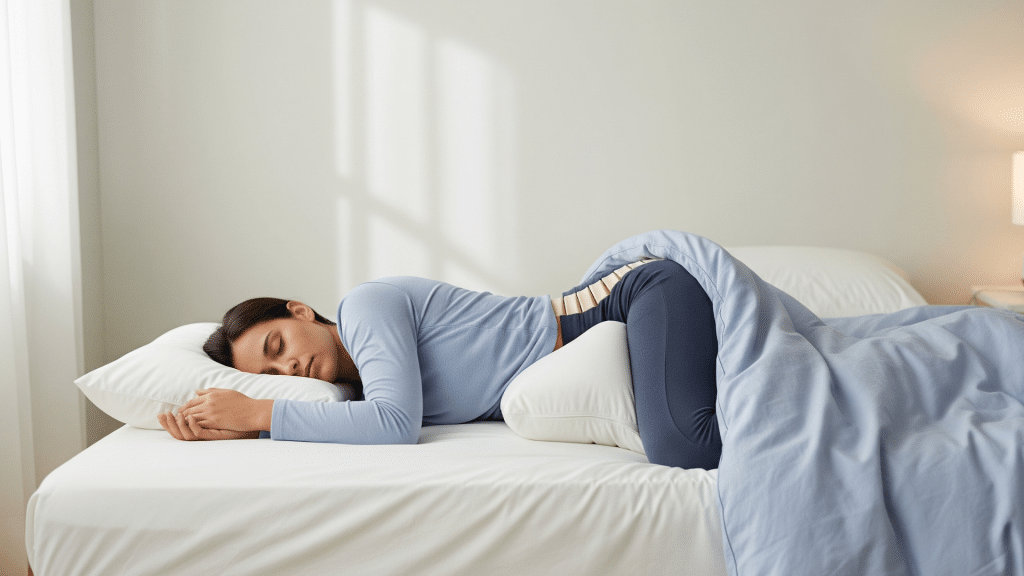
Side sleeping can be beneficial for hip pain, but it’s crucial to use a pillow between your knees. This pillow helps keep your hips aligned and reduces pressure on the affected hip joint.
This simple adjustment can significantly ease strain on the hip muscles and lower back. For added comfort, try sleeping on the opposite side of the painful hip if necessary.
3. Avoiding Stomach Sleeping
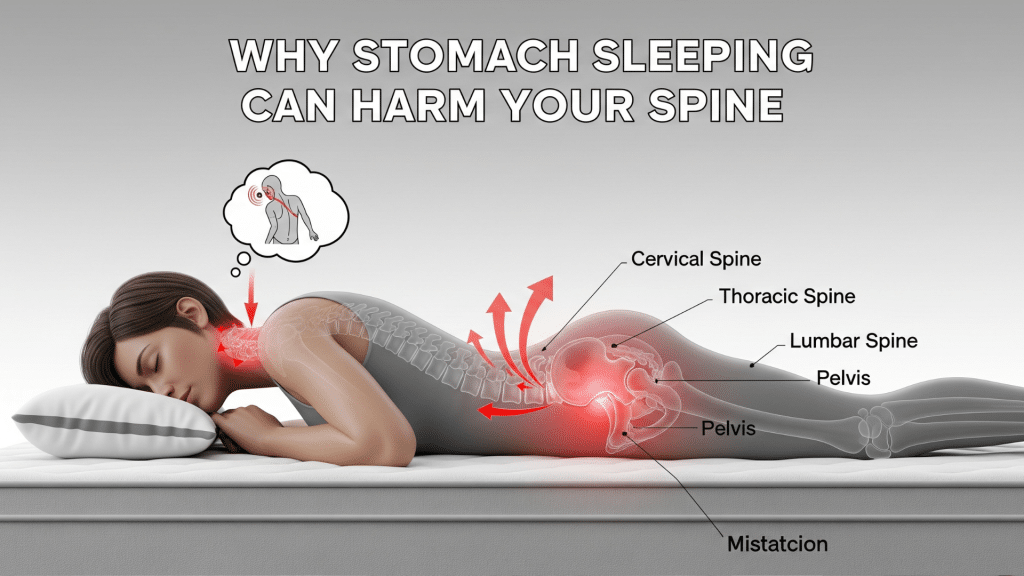
Stomach sleeping should be avoided, as it can exacerbate hip and back pain. This position causes misalignment of the spine and adds unnecessary pressure on the hips, making pain worse.
It also forces the neck into an unnatural position, which can lead to additional discomfort. Opt for back or side sleeping for better hip support.
4. Full-Body Pillow
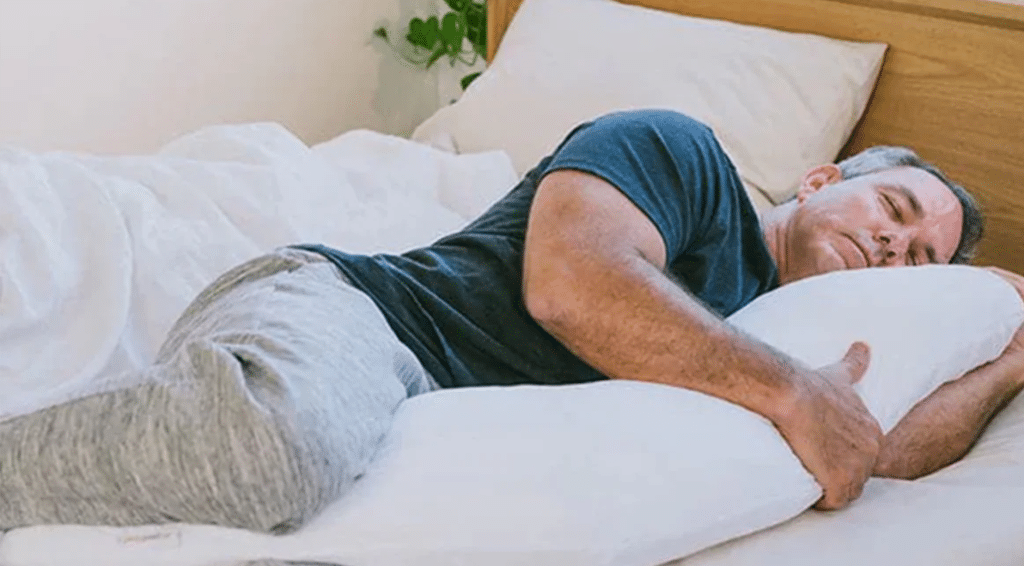
A full-body pillow provides extra support, especially for side sleepers. Hugging the pillow helps maintain proper spinal alignment and reduces strain on the hips.
This pillow can also reduce the pressure on the hip joint and improve overall posture, helping alleviate discomfort and enhance sleep quality.
For those with persistent hip pain, a full-body pillow can make a noticeable difference in comfort during sleep.
Pre-Sleep Routine to Relieve Hip Pain
A well-rounded pre-sleep routine can help reduce hip pain and improve sleep quality. Consider incorporating the following methods:
Heat Therapy
Applying heat before bed helps relax tight muscles and ease stiffness in the hip joints.
A heating pad or warm bath can improve blood flow to the affected area, preparing your body for sleep by reducing tension and discomfort.
Ice Therapy
Ice therapy is effective for reducing inflammation, particularly after physical activity or flare-ups. Apply an ice pack to the hip for 15-20 minutes to numb the area, helping to reduce swelling and alleviate pain.
Ice works best when used immediately after an activity that aggravates the hip.
Gentle Stretches
Performing gentle stretches before bed can help relieve hip tension and improve flexibility. Try stretches like the hip flexor stretch or pigeon pose to target tight muscles.
Hold each stretch for 20-30 seconds and repeat 2-3 times to alleviate tension and prepare your hips for a comfortable night’s sleep.
Over-the-Counter Pain Relievers
Over-the-counter pain relievers like ibuprofen can help reduce discomfort and swelling.
Follow the dosage instructions and avoid long-term use without consulting a healthcare provider. These pain relievers provide temporary relief, helping you sleep more comfortably through the night.
Relaxation Techniques
Incorporating relaxation techniques such as deep breathing or meditation can help calm your mind and reduce stress before sleep. Gentle yoga poses can also ease muscle tension and improve flexibility, preparing your body for a peaceful night’s rest.
Addressing Long-Term Prevention of Hip Pain
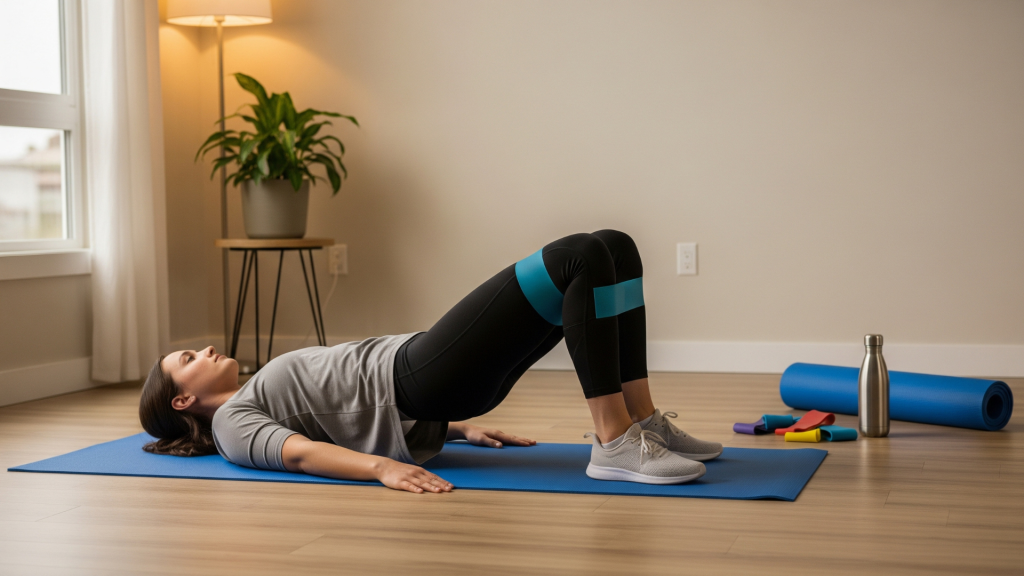
To prevent hip pain over time, focus on strengthening exercises, maintaining good posture, managing your weight, and avoiding high-impact activities.
- Strengthening Exercises: Strengthening hip muscles through exercises like glute bridges and hip flexor stretches helps reduce strain on the hips.
- Posture Maintenance: Maintaining good posture throughout the day prevents additional pressure on the hips, reducing nighttime discomfort.
- Weight Management: Maintaining a healthy weight lowers stress on the hips and joints, preventing excessive wear and tear.
- Lifestyle Changes: Avoiding high-impact activities like running or jumping can help reduce the risk of aggravating hip pain.
Alternative Methods to Relieve Hip Pain
Explore alternative methods for hip pain relief, including acupuncture, aromatherapy, cannabis-infused creams, and other holistic treatments.
Acupuncture: Acupuncture may help alleviate hip pain by targeting pressure points, improving blood flow, and reducing inflammation in the affected area.
Aromatherapy: Essential oils like lavender and eucalyptus can reduce pain and promote relaxation before bed, enhancing sleep and easing discomfort.
Cannabis-Infused Creams: Cannabis-infused topical creams are gaining popularity for their potential to reduce inflammation and pain, offering a natural alternative for pain relief.
Other Holistic Treatments: Massage, reflexology, and other alternative therapies can help relax muscles, improve circulation, and reduce hip pain, offering relief through natural methods.
Solutions for Different Sleep Types
Find tailored solutions for side, back, and stomach sleepers, including personalized tips for positioning and product recommendations based on your hip pain.
Sleep Type | Solution |
Side Sleepers | For hip pain on one side, place a pillow between your knees to align your hips. Choose a medium-firm mattress. |
Back Sleepers | Place a pillow under your knees to reduce pressure on your hips. A medium-firm mattress supports spinal alignment. |
Stomach Sleepers | Avoid sleeping on your stomach as it can strain your hips. Try side or back sleeping with proper pillow support. |
Customizing for Pain | Adjust sleeping positions and products (pillows, mattresses) based on your specific hip pain condition. |
To effectively relieve hip pain, customizing your sleeping position and choosing the right mattress and pillow are key.
Each person’s hip pain may require different adjustments, so it’s essential to experiment with these solutions and tailor them to your comfort.
When to Seek Professional Help
If hip pain doesn’t improve with at-home treatments or is accompanied by swelling, fever, or a loss of mobility, it’s essential to seek professional help.
Consulting an orthopedic specialist is crucial for conditions like labral tears or hip impingement, while a rheumatologist should be consulted if the pain is linked to arthritis.
Doctors may recommend tests such as X-rays or MRIs, and treatments might include physical therapy, medications, or even surgery, depending on the severity and cause of the pain.
Conclusion
Sleeping with hip pain doesn’t have to be something you just put up with every night.
Now that you know how to sleep with hip pain, from adjusting your position to using supportive pillows and building a calming routine, you’ve got a solid place to start.
Try out the tips that feel right for you and notice what brings the most relief. I’ve found that even small changes can make a big difference over time.
And if your pain isn’t getting better, don’t wait and go talk to a doctor. Everyone’s body responds differently, so keep experimenting until you find what really helps.
Want more practical tips for better sleep and less pain? Take a look at my other blogs for simple ideas that actually work.


